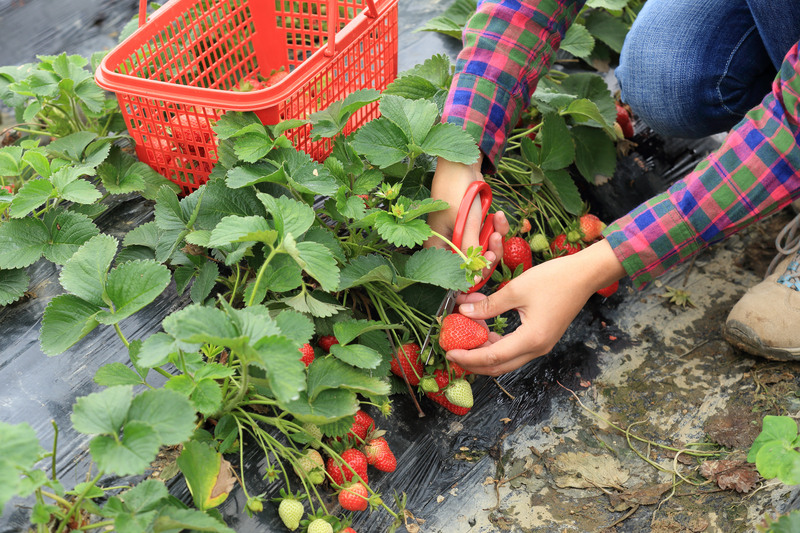Combat Lawn Drought Stress with These Reliable Summer Care Methods
Summer drought can be a formidable opponent for any homeowner hoping to maintain a lush, green yard. If you've noticed yellow, brittle, or thinning patches on your grass, your lawn is stressed and needs your help. Don't worry—with the right tactics, you can minimize drought damage and even help your turf thrive. Learn more about combating lawn drought stress with these reliable and research-backed summer care solutions.
Understanding Lawn Drought Stress
Drought stress for lawns occurs when grass loses more water through evaporation and transpiration than it receives from rainfall or irrigation. During periods of intense heat and limited rainfall, soil moisture quickly depletes, leaving root systems vulnerable and causing grass blades to wilt, curl, or discolor. Prolonged drought can lead to patchy lawns, weed infestations, and even permanent turf loss.
Recognizing Signs of Drought Stress
- Browning or yellowing: Grass blades turning brown or yellow, especially in full sun areas
- Footprint persistence: Grass doesn't spring back after being walked on
- Slowed growth: Reduced grass height and fewer clippings after mowing
- Wilting and curling: Blades may appear limp or roll inward
Early detection is key. The faster you respond, the better your chances of reviving stressed grass and preventing long-term lawn damage.

Top Methods to Combat Lawn Drought Stress in Summer
Ready to reclaim your lawn's vibrance? Here are the most reliable solutions for lawn drought care you can employ this summer:
1. Watering Wisely
One of the most effective ways to combat drought stress is strategic watering. Many homeowners make the mistake of watering lightly and frequently. Instead, you should irrigate deeply and less often to promote deep root development. Here's how:
- Water Early: Water your lawn early in the morning, ideally between 4 a.m. and 9 a.m., to reduce evaporation and fungal risks.
- Deep Soak: Aim for 1-1.5 inches of water per week. Use a rain gauge or empty can to measure irrigation output.
- Infrequent Schedule: Water once or twice a week rather than daily, encouraging roots to grow deeper and seek moisture.
- Spot Check: Check soil depth by inserting a screwdriver. If it's hard to push in, water more.
Bonus tip: If your region is under watering restrictions, prioritize more drought-tolerant grass varieties or areas that need the most help.
2. Adjusting Mowing Practices
Mowing can either help your lawn survive or amplify drought stress. Always raise your mower blade to the highest setting during hot, dry spells. Longer grass shades the soil, reduces evaporation, and helps crowd out weeds. Follow these mowing guidelines:
- Height: Mow cool-season lawns to 3-4" and warm-season lawns to about 2-3".
- Sharp Blade: Keep mower blades sharp for a clean cut, reducing water loss from torn tips.
- Clippings: Leave grass clippings on the lawn (mulch mowing) to return moisture and nutrients to the soil.
- Frequency: Mow less often during drought periods to minimize stress.
3. Fertilizing for Drought Resistance
Avoid heavy fertilizing during the peak of summer drought, as this can burn roots and increase stress. Instead, apply a slow-release, balanced fertilizer in late spring or early fall. This strengthens root systems and prepares your lawn to endure upcoming dry spells. For extra resilience, consider fertilizers with added micronutrients like potassium, which boost water uptake.
4. Aerating Compacted Soil
Compacted soils impede healthy root growth and prevent water penetration, exacerbating drought stress. Aerate your lawn annually—ideally in spring or fall—using a core aerator to remove plugs of soil and improve water and nutrient movement. Benefits of aeration:
- Enhanced root growth
- Improved water absorption
- Reduced runoff and puddling
- Stronger, more drought-tolerant turf
Bonus: Follow up aeration with overseeding for a thicker, more resilient lawn.
5. Mulching and Topdressing
Mulching grass clippings and adding a thin layer of organic topdressing (such as compost) can help conserve soil moisture, moderate temperature, and provide nutrients. Spread 1/4 inch of compost across your lawn in late spring to increase the soil's ability to retain water and support beneficial microbes. This eco-friendly method significantly boosts overall turf health and drought tolerance.
6. Choosing the Right Grass Varieties
Certain grass species are naturally more drought-resistant than others. If you are establishing a new lawn or overseeding, choose resilient varieties such as:
- Bermudagrass (warm-season)
- Zoysiagrass (warm-season)
- Tall Fescue (cool-season)
- Buffalograss (native to North America and highly drought-tolerant)
- Fine Fescue blends (shade and drought tolerant for cool regions)
Note: Native grasses and low-water blends are ideal for regions prone to chronic drought conditions.
Additional Tips for Managing Summer Lawn Drought
- Reduce Foot Traffic: Avoid walking on a drought-stressed lawn to prevent further damage and compaction.
- Weed Control: Weeds compete with grass for water and nutrients. Spot-treat weeds as needed, focusing on non-chemical methods if the lawn is struggling.
- Monitor for Insects: Some pests thrive in dry conditions. Look for signs such as chewed blades, yellow patches, or soft soil, and address infestations promptly.
- Manage Shade: Trim back trees and shrubs to improve air circulation and sunlight penetration.
- Install Smart Irrigation: Use weather sensors and timers to optimize when and how much you water, reducing waste and expense.
When to Accept Dormancy
In extreme heat, even the best-maintained lawns may turn brown and enter dormancy as a survival response. Don't panic—most cool-season grasses can survive weeks of drought in this state. As soon as conditions improve or rainfall returns, your lawn will green up again. The goal during dormancy is to keep the crown alive by providing an occasional deep soak—about 1/2 inch of water every 2-3 weeks if there is no rain.
Common Mistakes to Avoid During Lawn Drought Stress
While trying to combat lawn drought stress, homeowners sometimes make errors that can worsen the situation. Avoid these pitfalls:
- Overwatering: Watering daily or allowing run-off wastes water and promotes shallow roots. Deep, infrequent watering is best.
- Mowing Too Short: Scalping the lawn exposes soil to sun, leading to higher evaporation and more stress.
- Applying Fertilizer or Herbicides During Peak Heat: Both can further stress or damage grass during drought conditions.
- Ignoring Weeds: Don't let weeds overwhelm drought-weak turf.
- Neglecting Pest Issues: Drought-stressed lawns are prone to insect infestations; monitor regularly.
Planning Ahead: Long-Term Strategies for Drought-Resilient Lawns
The best way to protect your yard is by investing in preventative care and smart landscaping. Here's how you can future-proof your lawn against even the harshest dry spells:
Smart Lawn Design
- Xeriscaping: Incorporate alternative landscaping with native grasses, groundcovers, and mulched beds that require less water.
- Rain Gardens: Collect stormwater runoff in planted depressions to naturally irrigate your lawn and garden.
- Soil Improvement: Annually amend your soil with compost or organic matter to improve its water-holding capacity.
- Efficient Irrigation Zones: Divide your turf into zones based on sun exposure and soil type for targeted watering.
Sustainable Lawn Care Practices
- Minimal Pesticide Use: Preserve soil biology and pollinator habitats with eco-friendly lawn care.
- Regular Overseeding: Refresh your lawn annually with drought-resistant grasses to thicken the turf and outcompete weeds.
- Consistent Maintenance Schedule: Mow, water, and fertilize according to seasonal needs rather than fixed routines.

Frequently Asked Questions about Lawn Drought Stress
How can I tell if my lawn is dormant or dead?
If your lawn turns brown during drought but the crowns (the area where leaves meet the roots) are still firm and white, your grass is likely dormant, not dead. Dormant grass will green up within a few weeks of regular watering or rainfall. Dead grass pulls out easily and does not recover.
Should I fertilize my lawn during a drought?
No. Fertilizing during drought can burn roots and worsen stress. Wait until temperatures cool and soil moisture recovers before fertilizing.
Can I install new sod or seed during summer drought?
It's not recommended to establish new lawns or reseed in midsummer drought, as high temperatures and low humidity make it extremely difficult for new grass to survive. Schedule sod or seeding projects for early fall or late spring when rain is more consistent.
Are there ways to revive a severely drought-stressed lawn?
If more than 50% of your lawn is dead after a summer drought, renovation may be needed. Aerate, overseed with drought-tolerant varieties, and topdress with compost. In extreme cases, consider replacing sections with native grasses or low-maintenance groundcovers.
Conclusion: Unbeatable Strategies to Combat Lawn Drought Stress
Taking a proactive approach to combatting lawn drought stress ensures your yard stays healthy, resilient, and green all summer long. Remember, the key is preparation, proper watering, good mowing practices, and regular maintenance. By implementing these tried-and-true summer care methods, you'll be rewarded with a vibrant lawn that resists drought and stands out in your neighborhood—no matter how scorching the weather gets.
Start today! Address early signs of lawn drought stress, adopt best care practices, and enjoy the beauty (and pride) of a robust, drought-resistant lawn all season long.
For more tips on drought-tolerant landscaping and summer turf care, explore our related resources or consult with your local extension office.

